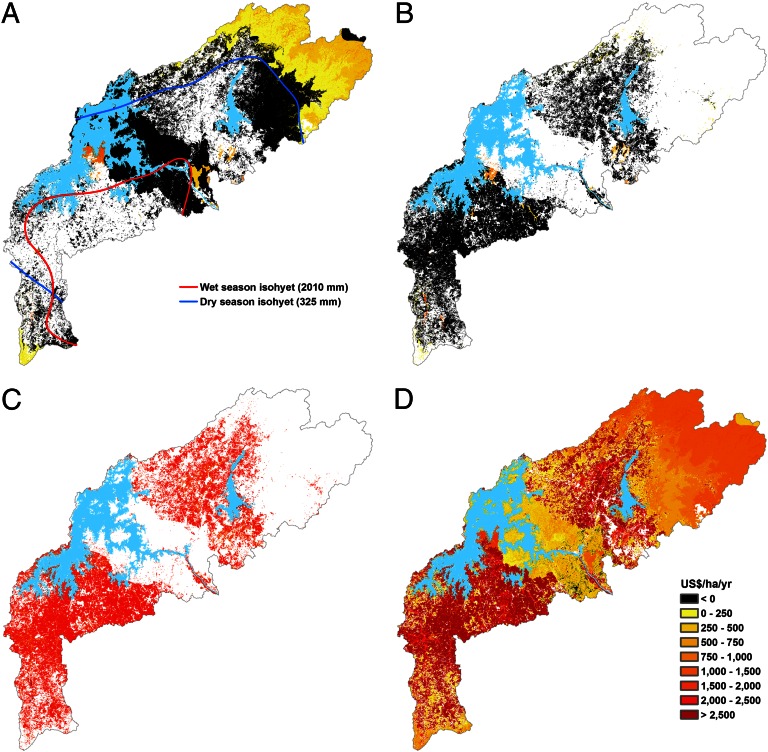Fig. 2.
Estimated steady-state annual average values for the ecosystem services in the Panama Canal watershed. (A) Value to the ACP of dry-season water flows generated by existing forest cover. (B) Value of dry-season water flows generated by conversion of grassland to “natural” forest. (C) Value of dry-season water flows plus timber production generated by conversion of existing grassland to commercial teak plantations and accounting for the opportunity cost of forgone livestock production. (D) Value of dry-season water flows, sequestered carbon, and timber production generated by conversion of existing grassland to teak production, accounting for the opportunity cost of forgone livestock production, and value of conservation of existing forest cover for water flow regulation and carbon sequestration (in D, land cover other than teak plantation and forest is shown in white). Source: Authors’ calculations. The figure shows the marginal value of dry season flows, using a water “price” of 0.44 US$ m−3. The marginal value of sequestered carbon, 4 US$ t−1 C, derives from ref. 48. The marginal value of forgone livestock production from grassland conversion, 249 US$ ha−1 y−1, was calculated from production data in ref. 59, assuming a livestock density of one animal per hectare. The marginal value of commercial teak plantation derives from sustainable extraction rates reported in ref. 60 and is based on a stumpage price of 280 US$ m−3 from ref. 61.

